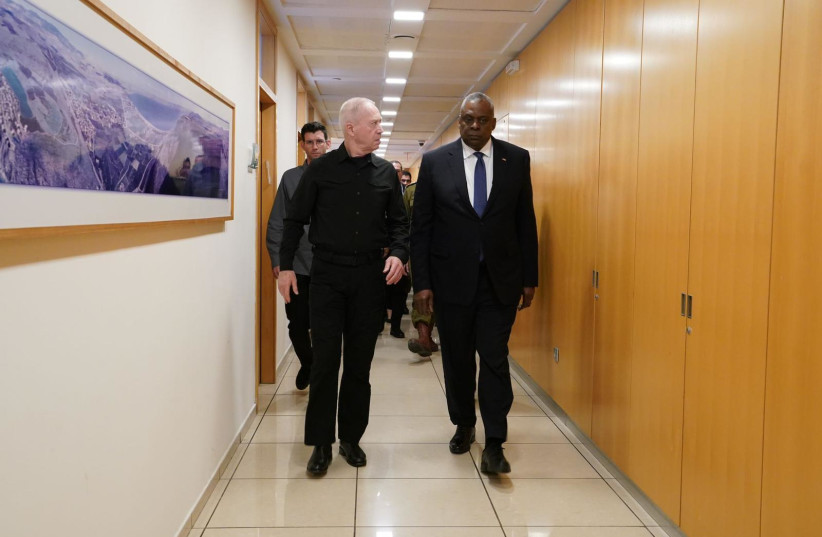Defense Minister Yoav Gallant on Monday said at a press conference with US Secretary of Defense Lloyd Austin that parts of Gaza are already close to being able to transition to a “day after” status – even as others remain in intensive conflict for an extended period.
Gallant’s statement marks the first time any Israeli official has publicly talked about the “day after,” the process of rebuilding any part of Gaza – since the start of the war.
Though he declined to say where, his statement came only hours after the IDF announced that Division 252 “completed its mission” in the northern Beit Hanun area, with IDF sources confirming to The Jerusalem Post that many of the reservists involved would now get to go home.
This does not mean that the IDF will reduce its robust attacks on Hamas in Shejaia in the north and Khan Yunis in the south, but it does mean that parts of Gaza may be differentiated based on their relative level of stability.

The defense minister indirectly acknowledged that the IDF still does not know exactly where Hamas’s leadership is located, saying there is still a need to “detect” it. However, he was adamant that at some point, even if much later down the road, Israel would get to them.
Defense sources told the Post that the “main war” might end without Hamas’s top leaders being killed or arrested. That, they said, may be left for some later stage.
Austin backed Israel in a stronger way than expected on the issue of Palestinian civilian casualties.
Concern for Gazan civilians
Despite US concern about the casualties, as when US President Joe Biden warned against “indiscriminate” fire, and Austin, who previously warned that harm to civilians could lead to “strategic failure,” the secretary of defense clarified on Monday that Jerusalem is facing “an incredibly complex battle space.”
He added that the density of the population in Gaza “makes it very very difficult to conduct any military operation.”
He added, “Democracies are stronger and more secure when we uphold the law of war; protecting Palestinian citizens in Gaza is both a moral duty and a strategic imperative… This will also be crucial for Middle East allies to help after the war.”
He was impressed at the lessons Israel learned from its operations in northern Gaza, which it was already implementing in the south – to reduce civilian casualties.
He also said that “Hamas hides behind innocent civilians… and does not speak for regular Gazans,” noting that Hamas fights “near hospitals, mosques, churches – you name it. That adds to the complexity.”
He further added that Hamas should never again be able to terrorize Israel, and that the US will continue to help it in bringing the hostages home.
In a moving moment, Austin extended his personal condolences to Gadi Eisenkot, a former IDF chief and current war cabinet minister, on the loss of Eisenkot’s son, Gal, who was killed in a battle in northern Gaza.
Austin said he spoke to Eisenkot as he was “sitting shiva,” using the traditional Jewish phrase for the seven days of mourning the loss of an immediate family member. He added, “On October 7, Hamas committed one of the worst atrocities in the history of modern terrorism,” noting that Hamas said it would repeat October 7 over and over again, and that the US must stand with Jerusalem against this “fanatical terrorist group… which wants to eradicate Israel.”
Both Gallant and Austin warned Iran and their Yemeni Houthi proxies about ongoing maritime attacks.
They also both advocated a diplomatic solution to convince Hezbollah to move its forces away from the border with Israel, so as to sufficiently improve security for Israeli northern residents to return to their homes.
The main open disagreement between the two sides has been, and remains, the plan for “the day after,” with Austin – representing the US position – insisting on the two-state solution, and Gallant alluding to starting to develop new relations with groups of Gazans not connected to Hamas, who could help manage the Strip post-war.
The press conference came after an earlier meeting between the two, which lasted many hours.
Joining the meeting were several top officials from both sides. Notable among these was the chairman of the Joint Chiefs of Staff, Charles Q. Brown, on his first trip to Israel as the US military’s top official (though he has visited the Jewish state in other capacities in the past).
Brown was formally appointed in September.
